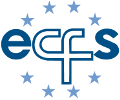C. Benden, A. Jaffe, J.E. Williams, S. Chomtho, M.S. Fewtrell
Portex Respiratory Medicine Unit, Great Ormond Street Hospital for Children, MRC Childhood Nutrition Research Centre, Institute of Child Health, London, UK
Patients with cystic fibrosis (CF) are at risk of impaired bone mineralisation. Suboptimal vitamin K status might be a contributing factor.
Aim:
To measure and identify factors associated with bone mineralisation and turnover in CF children .
Methods:
Dual X ray absorptiometry was performed in 29 CF children to assess bone mineral content (BMC). Lung function was assessed using forced expiratory volume (FEVI) and Chrispin Norman chest radiograph scoring system (CNS). Blood specimens were analyzed for 25-OH vitamin D, PTH, plasma total osteocalcin and intact P1NP. % uncarboxylated osteocalcin (ucOC) was determined. Deoxypyridinoline/creatinine(DPD/creat) ratio in urine samples was assessed.
Results:
Mean height and lumbar spine (LS) BMC, but not size adjusted LS bone mass (LS BM), were low in pre pubertal CF subjects compared to healthy children. P1NP was low in CF subjects compared to Swiss adolescents. DPD/creat ratio was high compared to healthy British children. 25 OH vitamin D and PTH concentrations were normal. % ucOC was similar to that previously reported in vitamin K deficient CF patients. Alter adjusting for age, sex, pubertal status, bone and body size, %ucOC was a significant predictor of LS BMC (0.4% decrease in BMD per 1% increase in ucOC), but not bone area. Other bone turnaover markers did not predict BMD. FEV v CNS and genotype were no significant predictors of BM or bone turnover.
Conclusion:
8-12 year old CF children had normal size adjusted BM. However, comparison with limited available reference data suggests, that bone formation may be reduced and bone resorption increased. % ucOC, a likely indicator of vitamin K status, is inversely related to BM.
